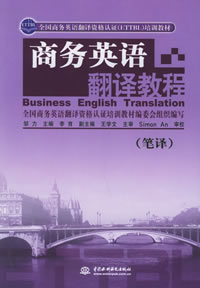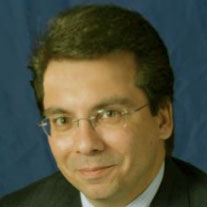医药与医疗器械行业资料翻译规则浅析
作者:古龙 2009-07-04




语际翻译公司 转载请注明https://www.scientrans.com
∗本栏目部分文章内容来自互联网,部分已经过本站编辑和整理,如有版权事宜请联系Email/MSN jesczhao@hotmail.com
Tips for Translation and Regulatory Compliance in the Pharmaceutical and Medical Device Industries
If you pick up a bottle of one of your prescription medicines you'll see various types of information on it - dosage and frequency of use, storage instructions, side effects, warnings, etc. – often in more than one language. The distribution of drugs and devices across borders has done away with translating packaging and labels as a luxury or value-add and, instead, made it a highly regulated, and more often than not, required process. Based on more than a decade of providing translation services to leading companies in the healthcare and life sciences industries, GLS offers the following tips for translation and regulatory compliance:
1. Do not assume that you can use English-language labels in foreign countries. In the European Union (EU) countries, for example, several directives, including the Clinical Trials Directive, Medical Device Directive (MDD) and In-vitro Diagnostics Directive (IVDD), have specific provisions that make translation of medical labels mandatory into the language or languages of the country in which the products are being tested, distributed, or sold. See the following directives which govern what labeling and instructions for use must accompany your product: Directive 98/79/EC of 27 October 1998 (IVDD) and Directive 93/42/EEC of 14 June 1993 (MDD). 2. If you do not have the expertise within your company, hire an international regulatory consultant and work with a translation firm who has expertise in the specific in-country guidelines. A consultant who is thoroughly familiar with the labeling and packaging regulations in foreign countries can review all regulatory compliance issues and provide expert guidance to your translators as they begin the translation process. For example, drug manufacturers and medical device companies who plan to test or market their products around the world must meet various in-country regulatory requirements. One of such regulatory requirements is proper translation, design, and content of all labeling and instructions for use. Specifically, the European Union has issued several directives regulating the CE mark, which is required prior to distributing medical and in-vitro diagnostic devices in the EU. Pharmaceutical companies looking to distribute in the U.S. must have certification that the foreign-language labeling is complete and accurate. 3. Do not use a canned machine translation program. Errors in translating medical labeling or instructions for use could lead to regulatory and/or product/civil liability. Therefore, it is especially important to work with professional translators who have medical and pharmaceutical translation experience, education, or both. Machine translation is not precise enough to accurately translate the highly technical terminology used in medical labels, and worse, could cause a misinterpretation of the actual meaning altogether. 4. Consider developing medical labels for each geographic region with similar regulatory requirements. More and more pharmaceutical and medical device companies develop region-specific labels or instructions instead of trying to fit all languages into one universal piece. For example, for the countries of NAFTA (United States, Canada, and Mexico), in which FDA-approved drugs can be marketed, the labels would include English, French, and Spanish languages. 5. Assign a point person within your organization for the management of all translation projects. As translation mistakes can delay product approvals and launches, managing translations becomes a critical component of the medical device and pharmaceutical global distribution process. By centralizing the translation process within your organization you will benefit from consistent quality of all translations, faster turnarounds, and reduced translation costs. There is more to pharmaceutical and medical device packaging and label translation than replacing words with the native language. It is imperative to achieve a translation quality that moves beyond language, cultural, and regional differences, as well as meets all local and international regulatory guidelines.来源:Global Language Solutions, Newport Beach, California, U.S.A.
- 评论
- seme:文章内容文章内容文章内容文章内容文章内容文章内容文章内容文章内容文章内容 章内容文章内容文章内容文章内容文章内容
- seme:文章内容文章内容文章内容文章内容文章内容文章内容文章内容文章内容文章内容 章内容文章内容文章内容文章内容文章内容

- 医生护士英语会话(11):西药(2)
2009-6-24 0:18:19 - 病人:早上好,大夫。 Patient: Good morning, doctor. ...
- 医生护士英语会话(10):西药(1)
2009-6-24 0:15:35 - 病人:我严重感冒。另外,还伴有头疼。请问我应该服用些什么药呢? Patient: I have...
- 第四届IEEE生物信息与生…
2009-6-30 19:42:01 - 基本信息 主办单位: 四川大学,IEEE生物医学工程协会(EMBS) 承办单位 开始日期 2010/06/18 结束日期 截稿日期 2009/1...
- 第九届全国光电技术学术…
2009-6-30 19:35:58 - 基本信息主办单位: 中国宇航学会光电技术专业委员会承办单位 开始日期 2009/11/01结束日期 截稿日期 2009...
















